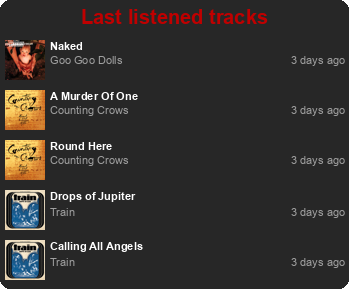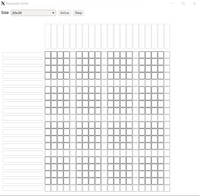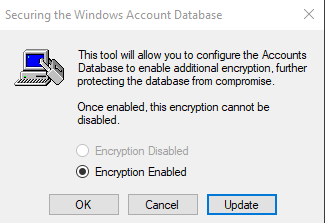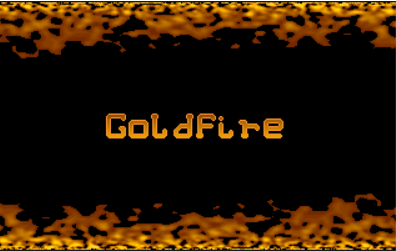Software
Here you will find links to some of my published software. If you find any of this software or the source code useful or entertaining, please consider donating via the PayPal button on the right if you are able.Last Listened

Last Listened generates an image with the last songs a user has listened to. It is extensible via plugins to support a variety of services, however, currently, only Last.fm is supported. More plugins will be added if I have time, or if any are user-contributed. The image size, colors, and fonts are fully user customizable and the image can be automatically sent to an SFTP server.
The image to the left was created by Last Listened and is updated every five minutes. The source code can be downloaded from my GitHub repository.
Nonogram Solver

This is a FOSS program written in Python for solving nonogram puzzles. Nonograms are a type of logic puzzle wherein a list of numbers are given for each row and column signifying which cells of a grid to fill in and which to leave blank.
You can download the source code on GitHub. There is also additional information, a short video tutorial on how to use it, and license there.
The video is for an older version so some of the features in the newest release are lacking and the interface is slightly different. However, the base functionality remains the same so I haven't created a new tutorial.
Dragon's Lair Bot

Several years ago, I wrote a bot in AutoIt to play Dragon's Lair. I have recently cleaned up the code a bit, tested it to make sure that it still works, created a video of it in action as well as one explaining the code, and uploaded it to GitHub.
Fake SysKey

A few years ago, I wrote a fake SysKey program in C# as a replacement to the real version. Scammers often use SysKey (a built-in feature of Windows) to lock people out of their computers. I made a replacement that scam-baiters can use that always says the password and verification password do not match. Additionally, in the error message, it displays what password the scammer entered in case it is used to protect any of their files as well.
At one time, at least one scambaiter was using it. I didn't publish it very widely (I sent it directly to several scambaiters) as I didn't want scammers to see the download and catch on, but - at this point - I highly doubt it is still very effective. Firstly, I don't think this is a tactic that scammers even still employ. And, secondly, if it has been being used, scammers are likely to have already started to catch on. After five years (limited release in 2017 and it's now 2022) I think it's safe to release it to the public.
You can download the source and a pre-compiled executable from GitHub.
Mailer

Honestly, I'm not sure why The Free Software Foundation continues to list this. I wrote it in C a couple of decades ago and haven't updated it since. The last update appears to have been in July of 2006 and the first version was released in October of 2000. It also isn't very useful these days.
To give an idea of how old it is, the last update based on my testing said, "it has been tested on Red Hat Linux 8.0 and 9.0, Fedora Core 2 and 4, and Windows NT Server 4.0 and Windows 2000 Server and has been successfully compiled under gcc and Borland."
The purpose of the program was to take form data entered by a user of a site, format it, and send it to the admin for that page (e.g. information requests, bug reports, etc.). At the height of it's popularity, IIRC, it was deployed at 4 locations that I was aware of. It quite possibly was used by other sites as well.
There are many better ways to handle this now, but - AFAIK - the program should still compile and run fine if anyone still wishes to do so.
For those curious to see the source code, you can read a longer description, download source code and binaries, and check the license on the Free Software Foundation's web site.
And here's the backup link for the source code.
Bear in mind that, when I wrote the first version, I had been out of college for about two years so, if you look at the code, I'm sure there are a number of "best practice" violations. Also, I was not aware of any regex libraries for C at the time (or even aware of what a regex was). If I had been, some of the code could have definitely been written more cleanly. Not to mention that an HTML parsing library should have been used.
GoldFire

The original GoldFire is a demo I wrote back in college shortly after teaching myself x86 Assembly language. I have ported it to Python with a few minor tweaks to the algorithm, end credits, and on-screen credits. All of the functionality is present, but it is much less eficient since it is running as an interpreted language instead of in machine language. Even so, it still runs at a higher FPS at the same resolution. A notable difference on the backend is that, in the original, under DOS, it was possible to directly access the video memory and the new version uses OpenGL.
You can read more about the project, see screenshots of the original and the new version, and download the source code at the GitHub repository.
Coming Soonish?
Color Scheme Creator
About a decade ago, I had written a color-scheme creation utility in Java for designers. The gist of it is that a color can be selected from a picker or entered manually and 5 additional colors would be generated. It is horribly out of date and doesn't look correct on modern Android devices.
If I have time, which is doubtful, I may update it and re-release it. What is more likely is that I'll make it FOSS and upload the code to GitHub for someone else to maintain and, hopefully, port to iOS as well.
It's also fairly likely that I'll add a tools section to this site (I've had that section on some previous sites) where I provide web-based versions of some of the tools I've written. So, Color Scheme Creator may get a new life on the web.
Various other projections
In high school, I wrote a set of batch file helper utilities in Assembly language that were made obsolete by features added to DOS 6.0 and, later, made even more obsolete by Windows. I may release them as a learning exercise in Assembly, but they aren't really that useful these days - even in DOSBox.
In high school and college, I wrote a couple of demos that I may release the source code for. I've actually mostly finished porting one of them to Python and OpenGL off-and-on over the last few years, and have released it (see above).
To go along with the demos, I wrote a few utilities such as a palette editor and a second version that had mouse support. I may release those if I can figure out which floppy disk image has the most recent code and executable. If nothing else, it is still useful for creating add-on palettes for the demo above (the Python version uses the same palette format as the original).
My Senior Seminar project from college was an interactive 3D demo written in Assembly. This could be useful for anyone wanting to learn 3D math or Assembly language.
My MicroMath end-of-year project from my senior year of high school. This was a "demo" in the loosest sense of the word. Written in BASIC and making use of features of the Tandy 1000 (such as 3-voice sound), you'll either need a Tandy 1000 or to emulate it in DOSBox.
Anything else that seems likely to be of interest to someone.

